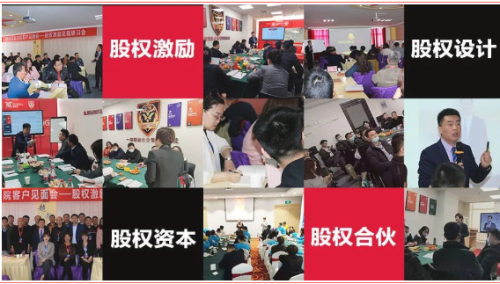很多人认为,干股激励的发放方式就是发钱,这是常规的思考方式。干股激励存在的大问题是现金流,而现金流往往是企业生存的水源,所以要结合企业的情况选择发放方式,避免因此影响了现金流,导致企业发展困难。
Many people believe that the distribution method of dry stock incentives is to issue money, which is a conventional way of thinking. The big problem with dry stock incentives is cash flow, which is often the source of survival for enterprises. Therefore, it is necessary to choose the distribution method based on the situation of the enterprise to avoid affecting cash flow and causing difficulties in the development of the enterprise.
常见的发放方式是现金、现金+虚拟股奖励(相当于华为的配股,干得好,干股对应的分红可以一部分发放现金,一部分再折合配股)、现金+消费性资产(如车、房子等)、现金+福利计划(如出国旅游)。
The common distribution methods are cash, cash+virtual stock rewards (equivalent to Huawei's stock rights issue, where a portion of the dividends corresponding to the shares can be distributed in cash and then converted into stock rights), cash+consumer assets (such as cars, houses, etc.), and cash+welfare plans (such as overseas travel).
虽然发放方式不同,但其核心内涵是一致的,就是给员工的激励方式一定是员工想要的,这需要老板在事前进行充分的调研,对员工进行量身定做的激励。
Although the distribution methods are different, the core connotation is consistent, which is that the incentive methods given to employees must be what they want. This requires the boss to conduct sufficient research in advance and provide tailored incentives to employees.

干股激励既是虚拟股的一种方式,对员工来说也是一种劳动报酬的所得,对企业来说一般是计入管理成本的。干股激励所有的约定一定是基于激励方案和协议的匹配,才具备完善的激励体系,规避员工与企业发生纠纷的风险。
Dry stock incentives are not only a way of virtual stocks, but also a form of labor remuneration for employees, and are generally included in management costs for enterprises. All agreements on dry stock incentives must be based on the matching of incentive plans and agreements in order to have a sound incentive system and avoid the risk of disputes between employees and the enterprise.
山东股权激励公司认为,目前我们常讲的“干股”就是红利股,不办理股权转让,不办理工商登记,职工离职后,干股就不存在了,但是可以分红。实际上,这种干股并不是股权,取得这种干股,并不具有股东身份,属于企业的管理范畴。
Shandong Equity Incentive Company believes that the commonly referred to "dry stocks" are dividend stocks, which do not handle equity transfer or industrial and commercial registration. After employees leave, dry stocks no longer exist, but can be distributed as dividends. In fact, this type of dry stock is not equity, and obtaining this type of dry stock does not have shareholder status and belongs to the management scope of the enterprise.
但对于员工的激励来说应当是长期结合,并且考虑到未来员工的归属感和价值体现,所以前期的干股激励会起到一定的作用,长期考虑就要结合限制性股权、期权、期股、实股等其他模式了。
But for employee incentives, it should be a long-term combination, taking into account the sense of belonging and value embodiment of future employees. Therefore, early dry stock incentives will play a certain role, and long-term considerations should be combined with other models such as restricted equity, options, futures stocks, real stocks, etc.
比如当激励对象连续三年达到激励条件,获得干股的分红收益,就可以考虑将这部分干股对应的股权出资变成实股,或者说以期权的方式按照当前的股权价格,三年之后进行购买变成实股。结合企业的发展、员工的晋升、激励体系等设置股权的晋升通道,达到持续的激励效果。
For example, when the incentive object meets the incentive conditions for three consecutive years and receives dividend income from the dry shares, it can be considered to convert the corresponding equity contributions of these dry shares into real shares, or to purchase them in the form of options at the current equity price after three years to become real shares. Establish equity promotion channels based on the development of the enterprise, employee promotion, incentive system, etc., to achieve sustained incentive effects.
That's all for the explanation of the distribution methods of dry stock incentives. I hope you can be helpful. For more information, please come to our website http://www.lushangyun.com Consultation and understanding!


 13698613138
13698613138


